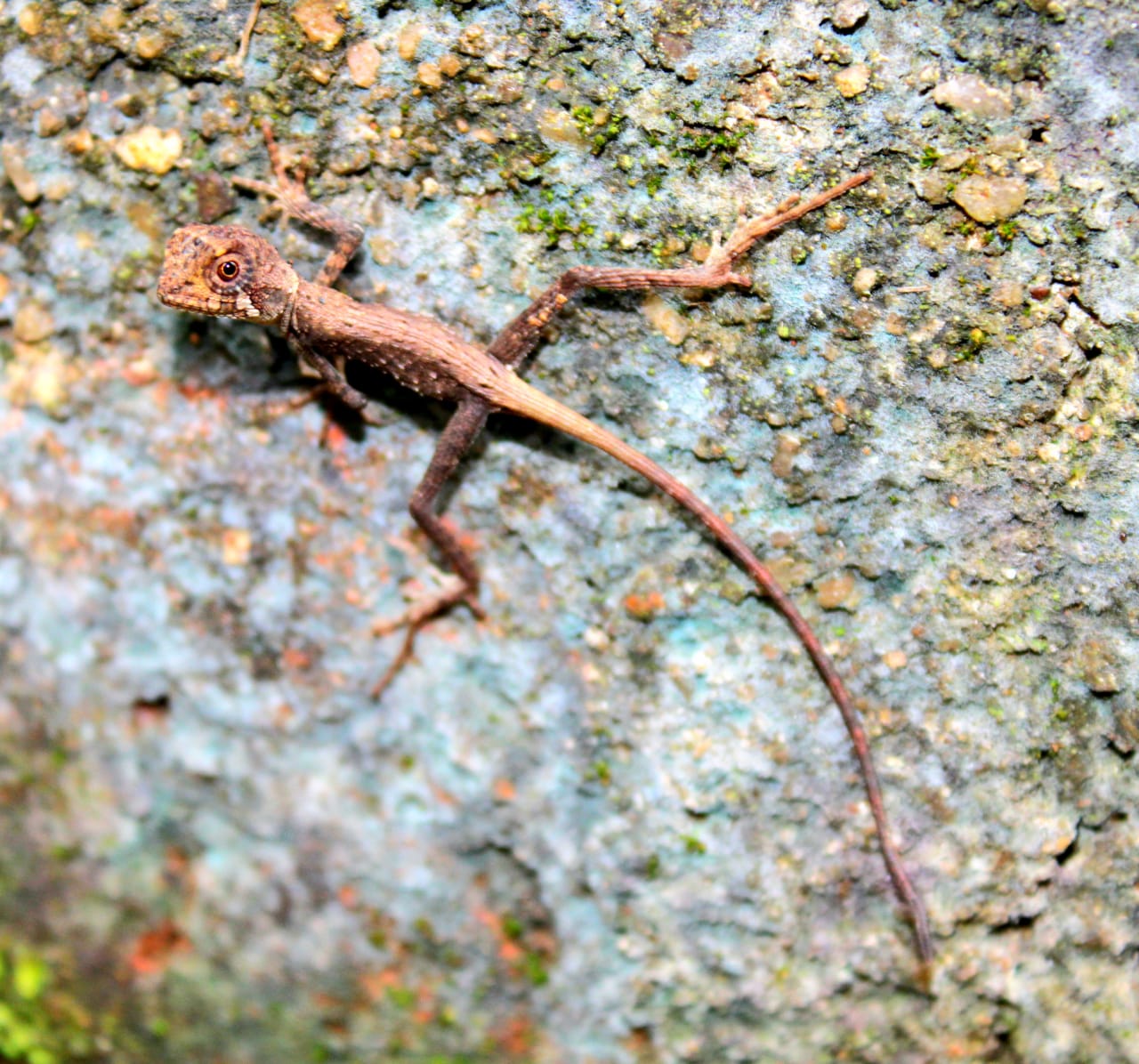Otocryptis Wiegmanni on:
[Wikipedia]
[Google]
[Amazon]
''Otocryptis wiegmanni'', commonly called the brown-patched kangaroo lizard, Sri Lankan kangaroo lizard or Wiegmann's agama, is a small, ground-dwelling

Picture gallery
agamid
Agamidae is a family containing 582 species in 64 genera of iguanian lizards indigenous to Africa, Asia, Australia, and a few locations in Southern Europe. Many species are commonly called dragons or dragon lizards.
Overview
Phylogenetically, ...
lizard
Lizard is the common name used for all Squamata, squamate reptiles other than snakes (and to a lesser extent amphisbaenians), encompassing over 7,000 species, ranging across all continents except Antarctica, as well as most Island#Oceanic isla ...
endemic
Endemism is the state of a species being found only in a single defined geographic location, such as an island, state, nation, country or other defined zone; organisms that are indigenous to a place are not endemic to it if they are also foun ...
to Sri Lanka
Sri Lanka, officially the Democratic Socialist Republic of Sri Lanka, also known historically as Ceylon, is an island country in South Asia. It lies in the Indian Ocean, southwest of the Bay of Bengal, separated from the Indian subcontinent, ...
.
Etymology
Thespecific name Specific name may refer to:
* in Database management systems, a system-assigned name that is unique within a particular database
In taxonomy, either of these two meanings, each with its own set of rules:
* Specific name (botany), the two-part (bino ...
, ''wiegmanni'', is in honour of German herpetologist Arend Friedrich August Wiegmann
Arend Friedrich August Wiegmann (2 June 1802 – 15 January 1841) was a German zoologist and herpetologist born in Braunschweig.
He studied medicine and philology at the University of Leipzig, and afterwards was an assistant to Martin Lichten ...
.Beolens, Bo; Watkins, Michael; Grayson, Michael (2011). ''The Eponym Dictionary of Reptiles''. Baltimore: Johns Hopkins University Press. xiii + 296 pp. . (''Otocryptis wiegmanni'', p. 285).
Habitat
The preferredhabitat
In ecology, habitat refers to the array of resources, biotic factors that are present in an area, such as to support the survival and reproduction of a particular species. A species' habitat can be seen as the physical manifestation of its ...
of ''O. wiegmanni'' is the wet zone forests and lower mountain forests (rainfall >2000 mm), up to , of Sri Lanka
Sri Lanka, officially the Democratic Socialist Republic of Sri Lanka, also known historically as Ceylon, is an island country in South Asia. It lies in the Indian Ocean, southwest of the Bay of Bengal, separated from the Indian subcontinent, ...
. It is commonly seen in the leaf litter of shady rain forests.

Defensive behaviour
When perceiving danger, ''O. wiegmanni'' spurts away quickly on its large hind legs and might eventually climb up a sapling or tree.Diet
''O. wiegmanni'' feeds on small insects, grubs, and tender shoots. Deraniyagala PEP (1953). ''A Colored Atlas of some Vertebrates from Ceylon, Volume 2''. p. 58. Das, Indraneil; de Silva, Anslem (2005). ''Photographic Guide to Snakes and other Reptiles of Sri Lanka''. London. p. 88.Taxonomy
''O. wiegmanni'' is closely related to the Indian kangaroo lizard ('' O. beddomii'' ) of the rain forests ofSouth India
South India, also known as Southern India or Peninsular India, is the southern part of the Deccan Peninsula in India encompassing the states of Andhra Pradesh, Karnataka, Kerala, Tamil Nadu and Telangana as well as the union territories of ...
.
Description
''O. wiegmanni'' may grow to an adult body size of about snout-to-vent length (SVL), plus a tail long. Its colour ranges from dark reddish brown to dull brown. Males are darker than females. Males have a maroon patch on theirgular sac
Gular skin (throat skin), in ornithology, is an area of featherless skin on birds that joins the lower mandible of the beak (or ''bill'') to the bird's neck. Other vertebrate taxa may have a comparable anatomical structure that is referred to as ...
.
Reproduction
Male ''O. wiegmanni'' areterritorial
A territory is an area of land, sea, or space, belonging or connected to a particular country, person, or animal.
In international politics, a territory is usually a geographic area which has not been granted the powers of self-government, ...
and can defend their territory against intruders through displays and fights. Females lay between three and five eggs in a nest in the ground between July and January, with a peak between October and January. The eggs are ellipsoidal, measuring . Hatchlings emerge after 57–70 days.
References
External links
*Picture gallery
Further reading
* Boulenger GA (1885). ''Catalogue of the Lizards in the British Museum (Natural History). Second Edition. Volume I ... Agamidæ ...'' London: Trustees of the British Museum (Natural History). (Taylor and Francis, printers). xii + 436 pp. + Plates I-XXXII. (''Otocryptis bivittata'', pp. 271–272). * Smith MA (1935). ''The Fauna of British India, Including Ceylon and Burma. Reptilia and Amphibia. Vol. II.—Sauria.'' London: Secretary of State for India in Council. (Taylor and Francis, printers). xiii + 440 pp. + Plate I + 2 maps. (''Otocryptis wiegmanni'', pp. 146–147). {{Taxonbar, from=Q2715895 Otocryptis Reptiles of Sri Lanka Endemic fauna of Sri Lanka Taxa named by Johann Georg Wagler Reptiles described in 1830